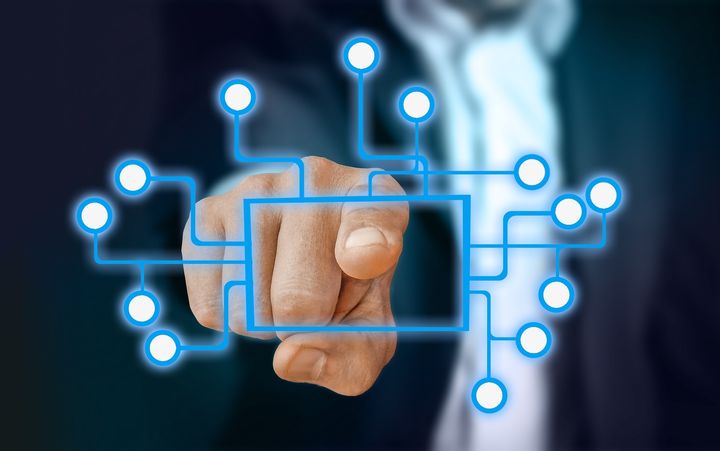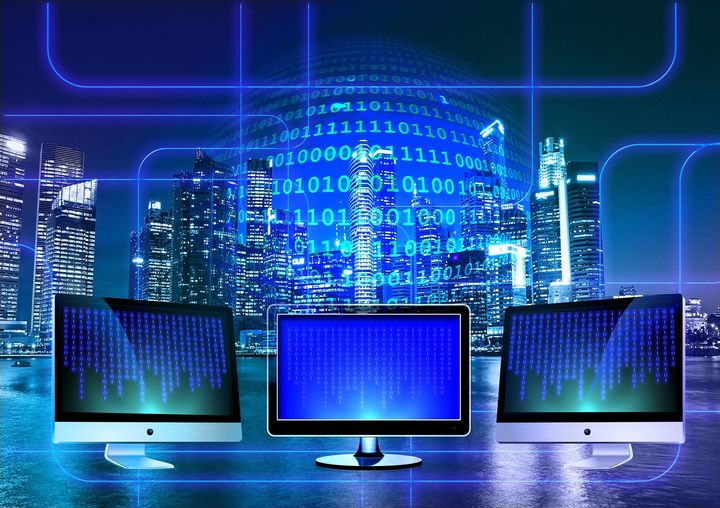
“As we move forward, more innovation will be necessary to facilitate an improved customer experience.”
We live in a digital world. Just short of being pixelated or virtual ourselves, the things around us continue to get smarter, faster, more connected, and increasingly digital. Customer relationships are digital. Business channels are digital. Our competitors are digital. My refrigerator is digital!
Communications transmit across different channels and platforms in the marketplace. That includes human-to-human, human-to-AI, machine-to-machine, and also machine-to-AI. A lot of this is driven by digital transformation, the lifeblood for how business will operate and succeed at living and conducting business in a digital world. Mobility is a catalyst speeding this process up considerably, but it’s not the only driving force behind the evolution.
Among enterprise decision makers, 85% feel they have a two-year timeframe to make significant digital transformation inroads before suffering financially and/or falling behind their competitors.
Machine learning, AI, predictive analytics, and big data systems all push the process of digital transformation moving forward. But how did we get here and where are we going? What are the current catalysts of a digital transformation and how can you become a part of the story? First we must start with the customer.
A Customer-in Approach
As we move forward, more innovation will be necessary to facilitate an improved customer experience in the enterprise. Kick-starting that innovation among your own teams is key. But the question is, how?
Steve Jobs said it best. “You’ve got to start with the customer/citizen experience and work backwards to the technology.” In other words, customizing and personalizing the user experience is the key to your success. This is called a customer-in approach, which prioritizes the customer journey, and focuses on improving engagement. Of course, the top three digital transformation drivers—which you are likely familiar with—include an optimized customer experience, speed or timeline of innovation, and time to market.
By 2018, 80% of all B2C companies will have developed immersive, authentic omni-experiences for their customers, partners, and employees—while 60% of B2B companies will have done the same.
A customer-in approach focuses on the customer journey throughout the buying cycle to ultimately identify what it takes to be agile, deliver contextually relevant experiences, and be successful. Over the next few years the following technologies will drive the next wave of change for customer-in strategies and overall engagement initiatives.
Artificial Intelligence
AI is a broad term representing many technology components that forward-thinking businesses must become more familiar with. Some of the major areas associated with AI are: Machine Learning (ML), Natural Language Processing (NLP), speech support, robotics, and computer vision. AI shares results in real time with other machines, so they are continually learning as compared to static or human-entry database systems.
AI and ML are expected to grow from a $6 billion industry to $36 billion by 2025; and Forrester predicted a 300% increase in investment in AI for 2017. AI, ML, and mixed reality (MR) systems are transforming how we communicate, how we learn, and how we become more operationally effective. More importantly, automation can be used to improve the speed and quality of delivery for organizations that want to implement these technologies within their existing processes.
When you think about your customers’ interactions with your company, AI will help predict and prescribe occurrences or next steps based on previous experiences. Informed decisions cannot happen without the necessary information, data, and predictive analytics being routed through smart, connected machines and then back to your teams.

“The IDC estimates 200 billion devices will be connected by 2020.”
Internet of Things
IoT devices can collect data, exchange information, and with the help of analytics they can execute actions automatically to trigger desired outcomes. IoT and connected devices play into a data-driven culture that is fast-paced, scalable, and optimized for driving efficient business outcomes. AI and IoT then combine to appropriately calculate, calibrate, and connect shared information that is needed to become smarter and faster.
The IDC estimates 200 billion devices will be connected by 2020, punctuating the impact IoT already has and will have in the digital universe. Now is the time to think about and strategize long-term implications that go beyond just mobility for this new landscape.
With the rise of IoT in our homes, our workplaces, and everywhere in between, organizations need an strategy to interact with customers and successfully optimize the customer experience from a product and services perspective.
Blockchain
Blockchain and cryptocurrency are game changers for gatekeepers and governments alike. C-suite companies need to have blockchain on their radar screens as they look to transform and provide a secure customer experience. IBM alone has invested over $200 million in blockchain-powered IoT technology.
To know how and why blockchain matters in terms of digitization, you must understand what roles it plays in the current market. The blockchain model can and will transform how business is conducted, or more specifically how transactions play out. It has the capacity to scale and enhance modern digital security, especially for financial-related data. It can also serve as the foundation of next-gen identities or digital IDs, and integrates well with advanced forms of authentication. It is not regulated, maintained, or owned by a single party.
That last point is arguably one of the most important aspects of blockchain. It means individual companies don’t own customer data—at least not all of it. It also means they have to securely connect to the blockchain in order to read, access or share it. The core data cannot be altered, even by the owner, as a blockchain is only meant to keep information updated and synced in essence.
But it’s not just customer data that brands would have access to through a blockchain. It can also be many other forms of data including product and transaction history. In this way, blockchain affords more visibility into the supply chain of a business or campaign, and how it influences the market as a whole.
You can see the true potential in the growing adoption of the technology, across many industries from finance to supply and fulfillment. Unsurprisingly, the Worldwide Blockchain Technology Market is expected to see a CAGR of 58.7% between 2016 and 2024.

“Cybercrime damages will cost the world $6 trillion annually by 2021.”
Cybersecurity
Cybersecurity requires a holistic approach with technical and non-technical solutions to protect integrity, authentication, and confidentiality of customer’s data. These digital transformation initiatives are reinventing the way companies operate and manage customer, team, and employee experiences across the organization.
As identified, digital transformation leads to a proliferation of connected devices and connected environments that support these human-to-machine, machine-to-machine, and machine-to-human protocols. Living in a digital world means in addition to securing network perimeters, we also need to safeguard the data that is spreading across these connected devices, the cloud, and other systems that harness and transmit more and more each day.
Cybercrime damages will cost the world $6 trillion annually by 2021. Progressive companies enacting digital transformation initiatives need to mitigate cybersecurity risks that could potentially and fatally damage customer experience, customer trust, and their bottom lines. It’s important for organizations to remain relevant and embrace digital models, but safety and security must both be important factors in that transformation.
Tying it all together
When we consider living and conducting business in a digital world and providing advanced customer experiences, there’s a fine line between the major and minor technologies and experiences you have to deliver to your users.
The digital transformation or modern customer experience process relies on more advanced tools and systems to provide a holistic and reliable experience. In other words, if you’re looking to make a shift to digital—like coming up with a mobile customer journey—you need to be acutely aware of how these technologies are connected. And these five catalysts – a customer-first mindset, AI, IoT, blockchain and cybersecurity – all need equal consideration in the bigger picture of digital transformation.
